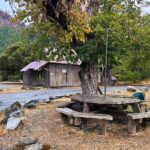While many Canadian cyclists may be fair weather riders, there is a large and growing contingent of cyclists that actively bike 12 months a year. In fact, from our most recent survey, 16% indicated they were year round cyclists and cycled through the harsher months, December to March.
Whether it is for transportation or recreation, getting outside and being physically active, in a safe manner, is more important than ever this winter.
Tips for Winter Cycling
If you are new to winter cycling, the following are some important considerations to help keep you safe and warm.
Bike Safety
- Thicker Tires – A wider tire tread and knobby tires will certainly improve mobility and help with safety. There are also studded tires that can be used in winter that provide a little assistance in icy conditions.
- Lights – With dark setting in at earlier times, make sure you have bike lights handy should you be caught out. Many cyclists ride with lights on in the day time as well, to increase visibility.
- Clean bike – If actively riding in snow season, you may encounter slush and salt and want to ride an older bike, as the salt or gravel used as de-icers can damage bike chains and all moving parts. You can use an old rag and a bucket of warm water or a low-pressure hose to get your bike clean, and if you have access to a warm spot to let your bike dry properly even better. Don’t forget to re-lube your chain and derailleur after you let the bike dry.
- Try dry lube – Having a well-oiled chain is important year round. But in the winter you might want to consider using a specialty dry lube, as it will help reduce the debris picked up on your chain and ultimately wear and tear.
What You Wear
It can be hard to regulate your temperature when biking in the winter, as you may start off on the cooler side but quickly warm up.
- Layers & Zips – Having removable layers or something that can be zipped open to allow for ventilation is a bonus.
- Protect Your Extremities – Hands and feet are often the first parts to feel the cold. A warm pair of wind and waterproof gloves or mittens and boots will go a long way. Consider waterproof boot covers. Special biking ‘lobster gloves’ or mitts can be purchase as well as a glove like insert across the width of your handlebars, also known as Pogies.
- Face Coverings – While masks are all the rage these days, by face covering we mean a balaclava or buff (stretchy tube scarf). Clear glasses or goggles are imperative if caught out in a snow fall.
- Waterproof Outerwear – While this gear can be costly, any type of pants and jacket that are water resistant will help make for a more comfortable ride.

Where & When You Ride
- Be smart about where and when you ride.
- Check the weather forecast and plan accordingly.
- Paved trails will be easier to navigate and ride as they drain faster. Many trails in urban centres are regularly cleared of snow during the winter.
- Beware of black ice.
- Roads will have less space for cyclists if there is any snow accumulation.
- Be extra cautious in vehicle traffic, motorists may not expect to see cyclists out this time of year.

Fat Biking
A great way to enjoy the winter wonderland is to give a fat bike a try. Essentially a mountain bike but with oversized tires, these types of bikes can be ridden any time, but can handle the soft stuff (snow and sand) particularly well.

Where to Winter Fat Bike in Ontario
Many locations with groomed winter trails in Ontario are now welcoming fat bikers, either on designated fat bike trails or on trails shared with cross country skiers and snowshoers. If you have your own fat bike there are many options and trails to choose from near or far from home, just be sure to check trail usage permission in advance online or posted on signs at the trailhead. Some locations and bike stores offer fat bike rentals, a super way to get out on two wheels and try this bike type without having to own one. The following list has been updated in January 2024 with trails and rental offerings, but make sure to double check or call in advance.
Central Ontario:
Barrie – Hardwood Ski & Bike – On weekends and holidays fat biking is restricted to the dedicated ‘Phatty’ 5km long trail. On weekdays all trails are open to Fatbiking. Rentals available. Trail pass required.
Barrie – Horseshoe Resort – Ride in the Copeland Forest on a 9km groomed fat biking loop. Rentals available. Trail pass required.
Caledon – Albion Hills Conservation Park – Well known for cross country skiing, winter fat biking is on the Black Trail only. Trail pass required.
Eastern Ontario:
Peterborough – Wild Rock Outfitters – Plan a ride on the trails in or near Peterborough and rent a Trek Farley 5 from the shop to give fat biking a try.
Lennox & Addington – L&A Forest – Fat bike 10km of single track trails and old logging roads in Flinton, north of Napannee. Trails are groomed, starting winter 2025.
SDG/Cornwall – Summertown Trails – Located just 20km from downtown Cornwall, ride on 10km of expertly groomed trails suitable for winter fat biking. Fat bike rentals available on weekends. Guindon Park, in Cornwall has over 10km of trails that be used for fat biking.
Prescott-Russell – Larose Forest – Enjoy multi-use winter trails in eastern Ontario through this conservation forest suitable for fat bikes.
Ottawa – Make the most of the city’s Capital Pathways and system of multi-use trails including the Kichi Sibi Winter Trail, Greenbelt Pathway or try an Ice-Trike rental on the Rideau Canal Skateway. Fat bike rentals available downtown from Cyco’s.
Northern Ontario:
Huntsville – Deerhurst Resort – Explore the trails at the resort overlooking Peninsula Lake. Rentals available from resort.
Bracebridge – Liv Bike Park Liv Outside Gear and Adventure store in Bracebridge has its own 8km network of groomed, single-track cycling trails through the Muskoka woods. Bracebridge Resource Management Area is another popular local area for fat biking. Rentals and guided outings available through Liv Outside.
Parry Sound – Georgian Nordic Outdoor Activity Centre – Winter cycling is available on a number of trails shared with snowshoers and skiers. When events are allowed, the centre hosts a fat bike race series. Rentals available. Trail pass required.
North Bay – The Stepping Stones Trails are an informal network of trails located on crown lands and within the Mattawa River Provincial Park boundaries. While the trails are not formally managed by an organized group, volunteers keep the trails open for snowshoeing and fat biking in the winter months. Remedy Rides has set up a fat bike rental outpost right at the Stepping Stones Trails.
Sudbury – Kivi Park – premier four-season destination with fat biking trails for beginner to advanced. Rentals available. Walden Trails – Located in the west end of Sudbury, bring your own fat bike to try the groomed trails marked for winter fat biking. Trail pass required.
Sault Ste. Marie – Try urban cycling downtown, ride the Hub Trail or check out the trails Hiawatha Highlands or winter only Crimson Ridge. Rentals are available at Sault Ste. Marie Canal National Historic Site.
Thunder Bay – Centennial Park/Shuniah Mines/Trowbridge Forest – this area is made up of a variety of trail networks including Centennial Park and the old Shuniah silver mine. Sleeping Giant Provincial Park hosts multi-use trails that can be explored by bike in the winter – bike out to the cliffs and Lake Superior shoreline. Rentals available from Rollin’ Thunder Bike & Ski in Thunder Bay.

For Additional Information:
- Destination Ontario – Guide to Fat Biking in Ontario, including rentals and guided excursions
- Ontario Trails – List of over 60 maintained trail systems that allow fat biking
Note: Many winter trails are shared use, hence extra caution and trail etiquette is required.
Note: Check ahead for fat bike rentals and trail conditions as snow conditions for fat biking can change rapidly.
Photo credits: Barry Best; Visit Caledon/Town of Caledon; Ottawa Valley Tourism. Association
The post Winter Cycling & Fat Biking in Ontario appeared first on Ontario By Bike.




